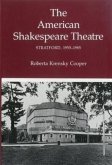In this rigorous investigation of the staging of Shakespeare's plays, Alan Dessen wrestlers with three linked questions: (1) what did a playgoer at the original production actually see? (2) how can we tell today? and (3) so what? His emphasis is upon images and onstage effects (e.g. the sick-chair, early entrances, tomb scenes) easily obscured or eclipsed today. The basis of his analysis is his survey of the stage directions in the approximately 600 English professional plays performed before 1642. From such widely scattered bits of evidence emerges a vocabulary of the theatre shared by Shakespeare, his theatrical colleagues, and his playgoers, in which the terms (e.g. vanish, as in ..., as from ..., "Romeo opens the tomb") often do not admit of neat dictionary definitions but can be glossed in terms of options and potential meanings. To explore such terms, along with various costumes and properties (keys, trees, coffins, books), is to challenge unexamined assumptions that underlie how Shakespeare is read, edited, and staged today.








